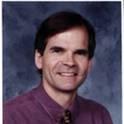Thesis
Cattle as grazing management and seed dispersal tools for increasing native species diversity on Great Basin rangelands
(2004)
Abstract
A series of experiments evaluated: 1) the influence of seed intake and gut retention time on seed passage , recovery , and germinability; 2) fecal seeding and broadcast /trampling as techniques to incorporate seeds into a well-established Agropyron desertorum (Fisch.) Schult. stand in Skull Valley , Utah; 3) intensive grazing as a means to reduce Agropyron biomass and increase establishment and survival of seeded species; and 4) the recovery and germinability of seed extracted from dung collected from the field. Two shrubs (Artemisia tridentata Nutt. ssp. wyomingensis Beetle & Young and Atriplex confertifolia Torr. & Frem.), a grass (Elymus elymoides (Raf.) Swezey) , and a forb (Sphaeralcea grossulariaefolia (H. & A.) Rydb.) were selected as representative native species. Holstein heifers were fed 15,000 , 30 ,000 , and 60,000 seeds of Artemisia , Sphaeralcea, and Elymus. Elymus recovery was negatively correlated to seed intake. Sphaeralcea had the highest percentage of recovered, undamaged seed, followed by Elymus and Artemisia. Sphaeralcea and Artemisia seed passage was highest on Day 1 then dropped sharply. Elymus passage and recovery were more consistent through time. Post-passage
germjnability was highest for Elymus and Sphaeralcea on Day 1. Artemisia germjnation was neghgible. In the fall seeding, Sphaeralcea emerged in 6% of the subplots (half were volunteers). Overall seedling mortality was 93%. Elymus emerged in 63% of the dung pats, with 86% mortality. No Artemisia emerged. Drought and Anabrus
simplex herbivory contributed to low seedling emergence and survival. In April 2003, similar treatments were applied, except Atriplex seed was substituted for Artemisia, and a third treatment was added (broadcast seeding/raking). No emergence was observed. Sphaeralcea had the highest seed recovery from dung
collected in the field trials, followed by Elymus, Atriplex, and Artemisia. Sphaeralcea germinability was similar for seeds collected from both trials (11 %) and Elymus germination was highest in the fall seeding (13%). These studies indicate that: 1) physical seed properties (size, shape, density, seed coat) influence seed passage , recovery, and germination; 2) intensive grazing can reduce Agropyron biomass by 50% for 2 years; 3) broadcast/trampling may be effective for Sphaeralcea; and 4) an average-sized dung pat (714 g) may have ample
germinable Sphaeralcea and Elymus seeds for plant establishment.
Disciplines
Publication Date
2004
Degree
Master of Science
Field of study
Range Science
Department
Forest, Range, and Wildlife Sciences
Advisor
Christopher A. Call
Citation Information
Marina K. Whitacre. "Cattle as grazing management and seed dispersal tools for increasing native species diversity on Great Basin rangelands" (2004) Available at: http://works.bepress.com/christopher_call/77/
